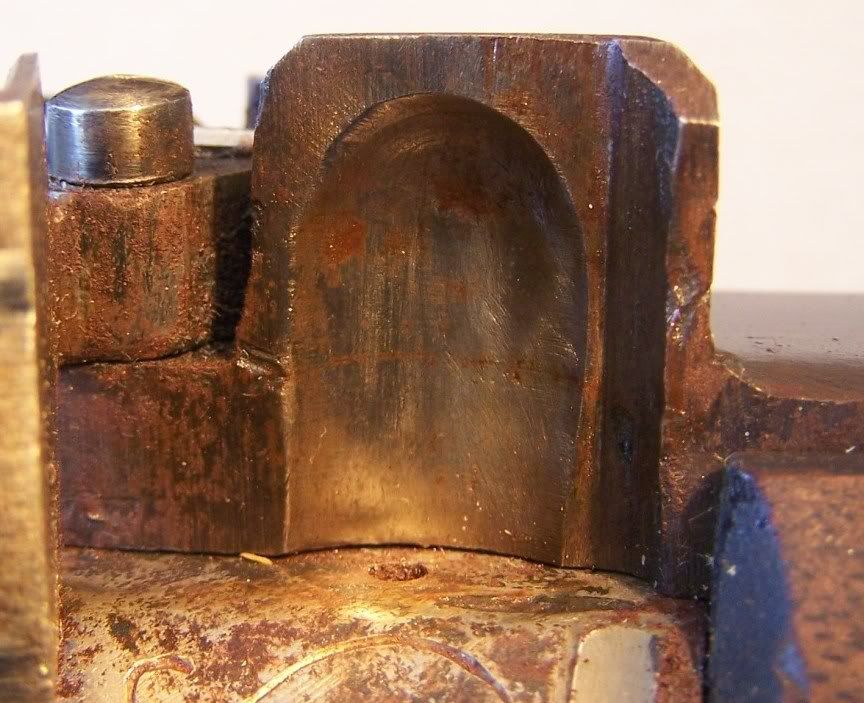Guys,
Most often I make a German style lock with the detachable pan as in the current topic of making a gunlock. However, occasionally I do weld on the pan so the pan & plate are one piece. I simply heat the rough formed plate & a bar for the pan to the correct welding temperature, both pieces look "greasy" or there is a surface "shimmer'. Then I simply press the two together, without any heavy hammering. This ends up with an OK, not perfect, weld with still a whole lot of cutting & filing mostly to make the pan fence. This thin section of the pan fence is too thin to effectively weld at the same time as the pan. I weld on the larger bar or block for the pan, then file & cut the rest, leaving the thin fence. I have never had a pan to break off (yet) but as you can see in these two photos, the weld is imperfect. Actually, everything looks very nice until the gun is shot many times and the B.P. corrosion shows up the flaw. I am still learning and my work is far from perfect, but here it is.
Jim, from Ssumba village, Wakiso district, Uganda East Africa



